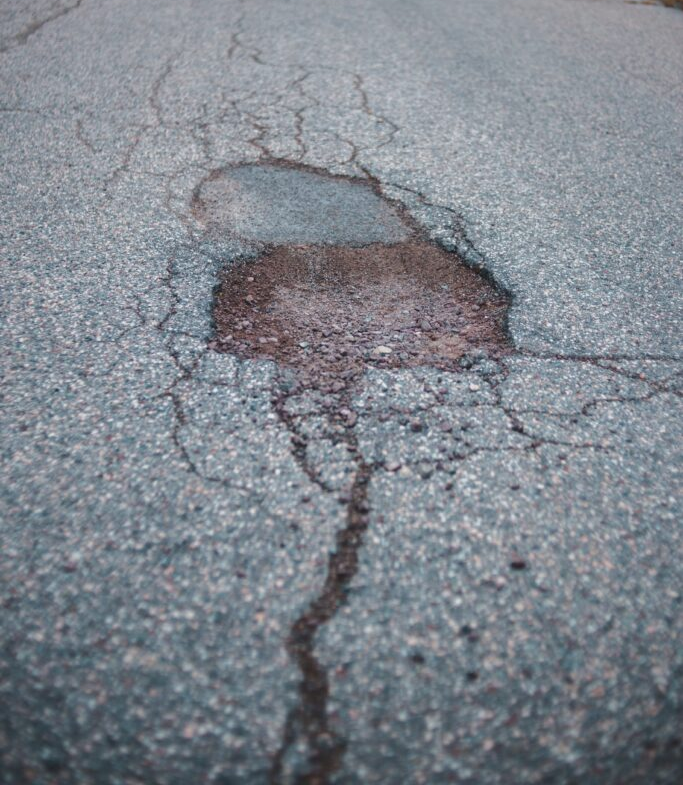One of my goals with these articles is to make them straight forward and easy to understand. This allows people with different backgrounds and experience levels to benefit from them.
I want to start by saying if you live in a colder climate, it will be difficult to prevent your asphalt pavement from cracking. There are multiple reasons why pavements can crack.
What causes asphalt pavements to crack?
Below are some of the main reasons why your asphalt pavement may crack.
- Temperature swings: As the temperature rises and falls, the pavement will expand and contract. This puts stresses on the pavement and eventually this can cause cracks to develop. When the pavement is new it is more flexible, but as it ages it can become more brittle and less flexible which increases the risk of cracks forming.
- Sunlight and Wind: Over time sunlight and wind can speed up the aging process of asphalt pavement. The technical term is oxidation. When asphalt starts to age the asphalt becomes less flexible and more susceptible to cracking.
- Moisture: Moisture can damage your pavement in multiple ways. The first way is from moisture that is able to penetrate the pavement from the surface (e.g. rain). Once moisture gets into your pavement it can start to break down the bond between the asphalt cement (e.g. the glue) and the aggregates. This weakens the pavement and increases the chance of cracks and other distresses forming. The second way moisture hurts pavements is when it gets trapped below the pavement. This can happen from high ground water, freeze/thaw, and water that comes from the surface (e.g. cracks allow water through, saturated soils). This causes the base aggregate layer to weaken, and the asphalt pavement has less support which can lead to cracks and other distresses (e.g. potholes).
- Thin Layers of Asphalt: Typically asphalt driveways are 2.5 to 3.0 inches thick. This is typically enough asphalt to handle cars and smaller trucks, but it doesn’t provide a lot of extra support if the asphalt starts to age or if there isn’t good support under the pavement.
- Minimal Amounts of Base Aggregate: Most driveways probably only have 3″ to 6″ of base aggregate under the asphalt pavement. This is mostly due to trying to keep the costs down. This is enough base to handle most vehicles, but it may not provide enough support if there are poor soils.
- Poor Soils: Poor soils (e.g. clay, silt) can be a major cause of asphalt cracking and deteriorating. Poor soils can hold water and they can expand and contract during freeze thaw cycles. This can weaken the base aggregate layer and also put extra stresses on the pavement. Poor soils can be challenging and expensive to deal with. The best way to deal with poor soils is trying to remove them to a depth of about 6″ to 24″ (or more) below the pavement. Adding in a clean sand layer (e.g. something that drains water) below the base aggregate layer reduces the chances of trapping water below the pavement. The deeper you go the less likely you will have issues, but the cost increases.
- Poor Construction: If the contractor doesn’t properly compact the base aggregate and asphalt layer, the life of the pavement can be reduced a lot. There are also a wide variety of base aggregates. Some are more susceptible to holding moisture (e.g. higher silt contents). This can reduce the amount of support it provides the asphalt pavement. It can also be challenging to pave asphalt driveways. The biggest challenge is trying to keep the asphalt hot. As asphalt cools it becomes more difficult to compact and get higher densities (e.g. lower air voids). Lower densities can make it easier for moisture, sunlight, and wind to age the pavement.
With this being said, there are still things that can be done to reduce the risk of cracks and potholes forming in your driveway. You can check out my other articles on things you can do to deal with the issues discussed above.
